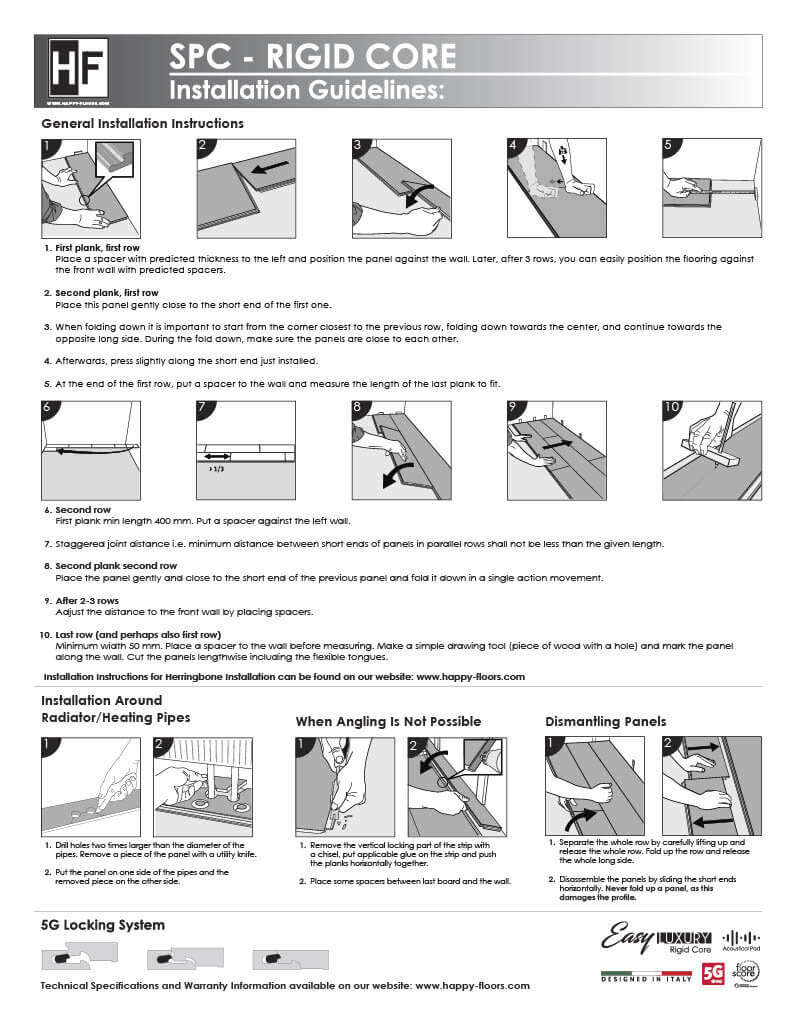Porcelain and Ceramic
Questions about Installation
-
Please email the Tile Council of America for any technical questions related to the underlayment, setting materials, or other installation questions.
-
Their email is: [email protected]
-
Their Installation Handbook is available in the Tile Council of America website. www.tileusa.com
Installation Specification
-
Before installing, each carton of tile should be emptied and blended with all others in the order. This is necessary to achieve a well blended aesthetic.
-
The responsibility to check each tile for obvious visual defects falls upon the installer. Claims will not be accepted for installations which have obvious visual defects.
Brick Patterns
-
The Tile Council of North America recommends no more than a 33% offset when installing an offset pattern.
-
Tile is often highest in the middle point and lowest on the edges, this is due to the time honored way in which porcelain and ceramic are baked. Putting tile on a 50/50 offset, will result in the highest point being next to the lowest, and could result in excessive lippage.
Technical Specifications
Where can I find the full technical specifications of a product?
The full technical specifications for any Happy Floors collection can be found in its brochure. For a full list of Happy Floors brochures visit our Brochures page.
Why is a 50% staggered layout not recommended?
Tile has a natural bow/bend to it, it is lower at the ends and higher in the middle. When installed at a 50% this lippage can cause a shadow effect.
What size grout joint is recommended?
There is no standard size for grout joints. According to the TCNA (Tile Council of North America), the grout width can vary depending upon the type of tile and how much variation there is in sizing from tile to tile.
What is a rectified edge?
A tile with a rectified edge has been machine cut. This mean all the tile’s edges are straight.
What does DCOF stand for?
Dynamic Coefficient of Friction (“DCOF”) measures a tile’s slip resistance.
What is a PEI rating?
Porcelain Enamel Institute rating is the rating given to a tile based on its hardness on a scale of 1 to 5. Group 1 being the softest, is suitable for areas where softer footwear is worn in light traffic areas. Group 5 being the hardest, is suitable for areas with heavy foot traffic, where abrasive dirt is present.
Grout Haze
Grout Haze
Tile may appear dull if grout haze remains on the surface. This often happens when grout is not thoroughly cleaned from the tile surface immediately following installation. Since grout is a form of cement, it becomes very difficult to remove after drying completely and may even etch the surface of the tile.
This can be avoided by grouting only a few manageable sections at a time and cleaning each section well before moving on to remaining areas. This step is particularly important when working with textured or polished tiles.
When grout remains on the surface, it attracts and holds dirt, thus making it impossible to restore the original sheen or surface to the tile. Products do exist to remove grout haze, however these products often contain low quantities of acid that can damage the surface of the tile. Extreme caution and supervision is required when using these products.
Luxury Vinyl
Luxury Vinyl


